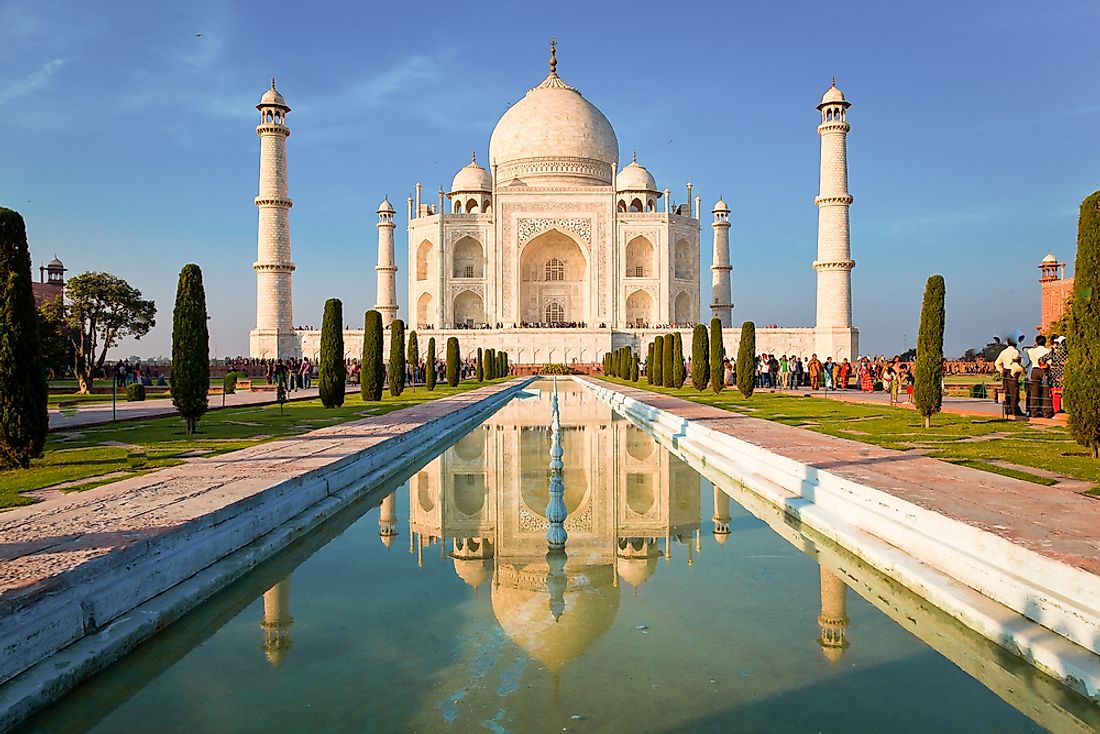When Was The Taj Mahal Built?

The Taj Mahal is a huge white mausoleum that is located in the town of Agra near the Yamuna River. The mausoleum is one of the best-known structures in the world and is designated as a World Heritage Site by UNESCO. The building of the mausoleum was done between 1631 and 1643, but it took another ten years for the gigantic project to be complete. The construction of the mausoleum was commissioned by 17th century Indian Emperor, Shah Jahan in 1631. The project is estimated to have cost about $827 million in 2015 estimates and involved thousands of laborers and a reported 1,000 elephants.
History
Shah Jahan was a ruler who reigned over the Mughal Empire in the 17th century who commissioned the building of the mausoleum in honor of his beloved wife, Mumtaz Mahal who had died in 1631 during childbirth. While the actual origin of the name “Taj Mahal” is yet to be known, scholars believe that the mausoleum was named after the Empress, stating that “Taj Mahal” was the name the Agra people called Mumtaz Mahal. The emperor wanted the mausoleum to be inspired by the beauty of Mumtaz, and exhibit her femininity. Upon the completion of the Taj Mahal, the remains of Mumtaz were exhumed from Burhanpur where they were initially buried, and transported to the new mausoleum were they were buried in a cenotaph.
The Love Story of the Taj Mahal
The Taj Mahal is often labeled as the “greatest expression of undying love and marital commitment in history,” as it was a testament to the love Shah Jahan had for his wife, Mumtaz Mahal. The two were betrothed while still teenagers (Shah was only 15 years old while Mumtaz was 14 years old). The Emperor was genuinely in love with Mumtaz, so much so that he had little care to exercise his polygamous rights as Emperor, and only married his two other wives, Akbarabadi Mahal and Kandahari Begum to sire more children. Therefore, when Mumtaz Mahal died in 1631 while delivering their daughter, Shah Jahan was so sad that he would not be seen in public for years. After recovering from the death of his wife, Emperor Shah made the construction of a mausoleum in honor of Mumtaz.
Architects
The identity of the persons behind the design of the Taj Mahal can only be speculated, as there exist no records about the designers. The construction of the Taj Mahal involved a team of architects, the best in the Mughal Empire who were led by Mir Abd-ul Karim and Ustad Ahmad Lahauri. The two were selected by the Emperor since they had been involved in the construction of other structures in the Empire. For the mausoleum’s exterior decorations, the Emperor saw fit to have calligraphic inscriptions. The entire mausoleum features calligraphic inscriptions from the Quran. Amanat Khan, a Persian artist, and renowned calligrapher was tasked with making the calligraphic inscriptions. Amanat made his beautiful calligraphy on the Taj Mahal in 1609. Scholars believe the choice of the lines from the Quran to be used on calligraphic inscriptions was the discretion of Amanat Khan and not the Emperor.







